This page contains affiliate links. We may earn money or products from the companies mentioned in this post through our independently chosen links, which earn us a commission. Learn More
Every pet parent wants what’s best for their fur babies. We do everything we can to make sure that they enjoy their healthy lives happily.
One of the things we can do to make that happen is by providing a balanced nutritious diet.
But aside from canned dog foods and dry kibbles, there’s another form of pet food that’s been a controversy for a long time – raw dog food diet.
Contents & Quick Navigation
What’s a raw dog food diet and when did it start?
Sled dogs and Greyhounds used for racing are the ones who started to use the raw food diet.
But in 1993, Ian Billinghurst, an Australian veterinarian, pioneered this diet and called it BARF. It stands for Biologically Appropriate Raw Food.
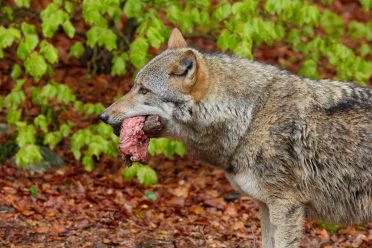
The diet that generally contains organ and muscle meat, crushed or whole bones, vegetables, fruits, raw eggs, and some dairy, would benefit all dogs, as per Billinghurst. Especially since this is how canines ate before they got domesticated.
He claimed, together with his supporters, that dogs who have this diet would get healthier skin and shinier coat, cleaner teeth, more energy, and smaller stool.
But a lot of vets, along with the FDA and American Veterinary Medical Association (AVMA) didn’t agree with the BARF diet.
Dangers of the Raw Food Diet for Dogs
There’s a reason and backed up research on why the AVMA and FDA are opposing the use of raw dog food in feeding canines.
Although Billinghurst and raw diet advocates gave some insight about its benefits, this kind of diet poses a lot of serious health problems not only for dogs but also people.
All owners must know that opting for a BARF, raw, or home-cooked diet for your dog is time-consuming. It requires meticulous care when handling, preparing and sanitizing.
It’s also more expensive. Costs of the raw dog food diet would greatly vary with their ingredients and the way it’s prepared.
Aside from that, raw or uncooked meat contains deadly pathogens that can make your dog sick. If not, he can possibly carry and transfer them to your other pets or people he comes in contact with.
That is why this type of feeding is not advisable to be tried in homes with immunocompromised individuals and small children. Raw food can be contaminated with bacteria such as E-coli, listeria, and salmonella.
Another concern is the obstruction of bones or other solid food that can cause choking or even intestinal damage to your pet.
It’s a common thing to see dogs and puppies enjoying a bone. It serves as their entertainment, and also appropriate for their teeth and muscles of mastication. But keep in mind that a bone shouldn’t be eaten. It’s only to gnaw on and play with.

So a good bone is one that can’t be fractured and consumed. It also shouldn’t have a fatty marrow or tissue remains that can harbor bacteria.
Some teething pups may not be too keen on a bone in one try, but after a few hours, toss it out and give him or her a new one.
Another concern comes from the veggie lovers.
While dogs are classified as omnivores, but so are bears, and you wouldn’t think that a bear would eat everything that a herbivore does.
It’s understandable for humans to manage their own nutrition and health by being vegetarians. The problem is, you can’t do this with dogs. Don’t try to burden your dog with your own emotional responses. They don’t have any moral or ethical objection to having a slice of good red meat.
As owners, we have to stop thinking that dogs are an extension of ourselves, preferences, or that they can be experimental systems. Don’t just try things on your pet just to see if it would work or not.
If your dog has been thriving on grocery store dog food – as most do – the old adage ‘if it ain’t broke, don’t fix it’ should leap to mind.
Dry Kibbles VS Raw Food: What’s the best for my dog?
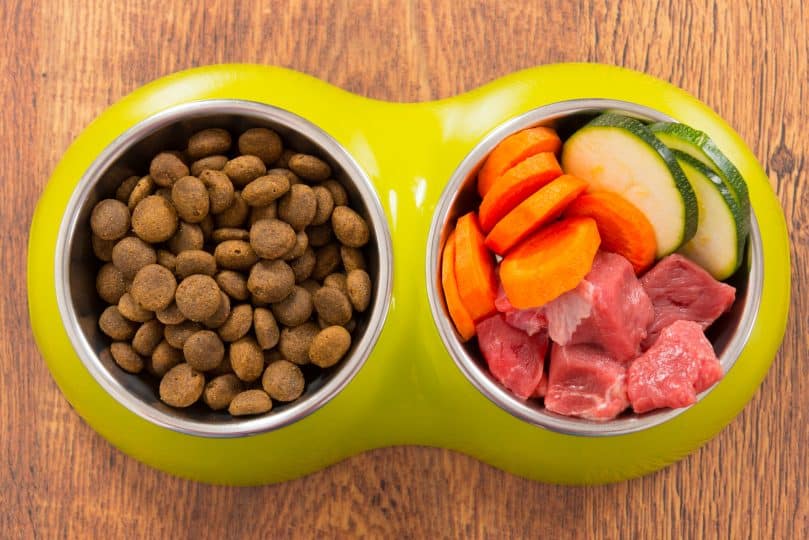
Not unless you’re a veterinarian or a nutritionist, always talk to a professional about your dog’s dietary needs before changing it. They’d be the only people to help you figure out what’s best suited for your canine’s lifestyle, exercise, and health while providing all the nutrition he needs.
Just like how working canines, such as hunting dogs, may have different caloric specification than a typical household pet.
Dry Kibbles
The ingredients for dry dog food will vary by brand, but they offer nutritional balance. As a matter of fact, the nutritional value, calories, and content of commercially prepared dog food are regulated by law.
It would usually contain proteins such as fish, beef, poultry, and eggs, as well as cereals, grains, antioxidants, minerals, and vitamins.
Those who are firm believers of dry dog kibbles claim that the benefits to this are:
- Cost-effectiveness
- healthier gums
- lesser dental plaque
- easier storage
- avoid spoilage
- reduces the risk of bacteria.
By choosing dry dog food, all you have to do is read the label to help you find one that’s suited for your canine’s breed size.
In fact, there are also dry kibbles that are specifically made for puppies and senior dogs. They even have dry food that can help dogs with health issues, such as joint problems.
The first ingredient on the list is the most prevalent. The best dog food would have one, novel source of protein like salmon, chicken, and lamb. If you’re worried about grains, like corn, causing allergies to your dog, just choose an alternative to fill in the carbohydrates your dog needs such as oats and rice.
Essence Pet Foods is a new brand for those paw parents who prefer dry kibbles or canned food for their fur babies. It provides a lot of meal options and is suitable for canines in different stages of life.
Also, you shouldn’t buy excessive amounts of dog food. Always read the labels and the “best by” date since the shelf life of dog foods can be affected.
You should pay attention to portion control which may help your dog live longer and healthier.
Raw Dog Food Diet
Aside from being time-consuming, expensive, and more likely to carry bacteria, the raw food diet doesn’t have balanced nutrition.
Generally, dogs would need food that has water, carbohydrates, fats, protein, vitamins, and minerals. Not only that, their nutritional needs will change as they go through different stages of life.
Although you can mix in different ingredients into his raw food diet, you won’t be able to properly balance the adequate levels of vitamin D, calcium, and phosphorus, which are essential for the development of your dog.
You may be following home-made diets from a recipe book. Sure, they’re automatically true, correct, authentic, and well-researched. That is why they’re published.
But do all pet owners have a lab-quality balance to measure every ingredient they include in their dog’s diet? And to check the nutritional analysis of each meal?
An unbalanced diet or nutrition would put your dog at severe risk for a lot of health issues.
For example, if your dog has a high blood phosphorus level – is it because of kidney disease or due to a BARF diet? Your female dog (bitch) isn’t getting pregnant.
Is she hormonally challenged, bred at the wrong time, infected, or were you adding estrogen-like compounds to her diet?
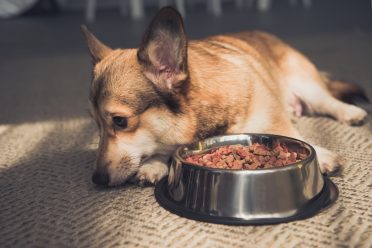
Diagnosis and treatment of health issues would be more difficult since we have to factor in all of the variables that these raw, BARF, and home-cooked diets may cause.
But what if your dog is showing skin problems or hair loss while trying the raw food diet?
The only thing you can do is try switching to high-quality dog food which almost always improves any dog’s situation.
If you’re really into the raw food diet, find a vet who’s familiar with this type of feeding.
After all, they’re the only ones who can give you guidelines and tips on how to implement it while preventing health problems.
Common mistakes when switching to a raw dog food diet
Are you an advocate of the raw, BARF and homemade diet for dogs? Or do you want to see if your pet would gain or lose weight, or even have fewer health issues if you go for this kind of feeding?
Well, switching your dog’s diet is never a simple task. Here are some mistakes you should avoid before trying to change things up.
Lack of understanding or knowledge about the basics of nutrition
When we say “raw”, it doesn’t mean that you would get any animal part and just give it to your dog.
One of the biggest problems with this type of feeding is there are no established vitamin or mineral standards. That is why it’s important to talk to a vet or professional instead of just throwing your dog a slab of uncooked steak.
Aside from how different the meaning of raw is from any pet owner to a professional’s, it’s more about considering what is a balanced diet for your dog.
Not complimenting the meat with other ingredients
A raw diet for dogs has uncooked meat and a few additives – bone, organ meat, fruit, and even supplements. It can even have cooked veggies or rice. Some owners would use or mix in freeze-dried dog food which contains raw meats with vitamins and minerals.
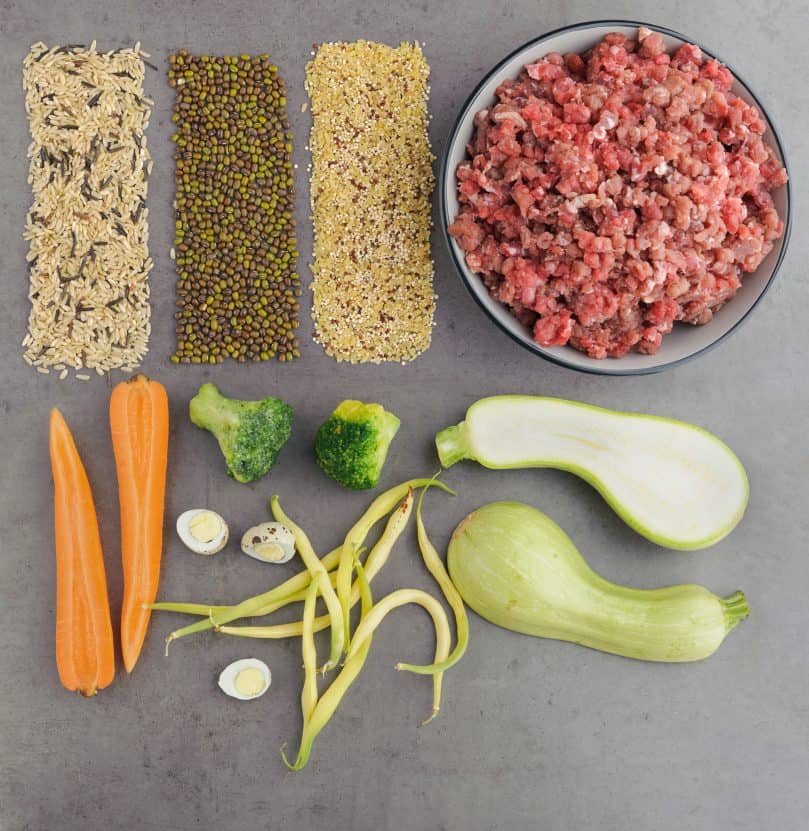
You can throw in some seafood like cooked oysters or mussels. Getting the proper balance of omega 3:6, you would need to cover the minerals and vitamins with a variety of ingredients.
Other kinds of dog food even have all the necessary “extras”!
Let’s use a popular example. A patty that is BARF-based has 50% raw meat and the other half with an assortment of ingredients like raw eggs, cheese, cod liver oil, and salt. If you wish to add vegetables, know that dogs have a harder time digesting them. So make sure that veggies are cooked, juiced, or minced.

Fruits are also a great addition to a raw diet. Not only are they a great source of vitamins, but also flavor and variety. Just keep it below 30% as a dog’s nutrition should mostly come from meat.
Why not add some berries for its antioxidant content? Then give slices of watermelon and apples as treats!
But not all fruits should be given to your pet. Don’t even try feeding him raisins or grapes since it they can cause kidney problems. And don’t give those sugary canned fruits, as well.
Overlooking supplements
Not one dog is like the other. Just like any individual, each pet is unique. So it’s possible that one canine would need a complement for their diet.
Calcium is an important nutrient that you have to make sure your pooch gets enough of it in their meals. The good thing is it’s easy to add. A premade raw dog food diet already have essential additives like calcium to make sure it’s balanced.
If you prefer homemade, you can ground oyster shells or eggshells that can give that dietary boost in calcium.
For omega 3 fatty acids and anti-inflammatory benefits, add flaxseed oil into your dog’s raw diet. Looking for other sources of minerals? Try seaweed and kelp. It will all depend on what your pet needs.
If your dog needs more vitamins or joint supplements, then you can mix it in his or her food.
You worry too much about safety concerns
This is a normal reaction, especially if the FDA is warning pet parents about the risks of handling and feeding your dog raw meat. We get how scary it can be as it won’t just affect animals, but humans too.
But as long as you follow the proper way of how to handle food, then it’s basically the same as preparing raw burgers or steak.
Doing everything you can to keep bacteria at bay poses fewer health issues for most pets. But if any human in your home has a compromised immune system, then this type of diet is not suitable for your dog.
The number one issue when shifting food or diet is gastrointestinal problems. And that includes diarrhea since most dogs have an intestinal tract that’s sensitive. But it’s not a permanent problem for canines. You can battle with this by adding one new ingredient or mixing in digestive enzymes to help your pooch with the transition.
Practicing safety for your dog’s raw food diet
For those who believe that this is the healthiest feeding option for your pet, here are some guidelines that the FDA recommends. It can help reduce risking your dog’s health and everyone else in the house.
- First of all, only purchase any raw meat from a trusted butcher or source, and use it within 3 days while bacteria level is still low. Keep it in freezing temperature until the time you’re going to use them.
- Always thaw raw meat in the fridge or microwave. Don’t let it sit in room temperature in your countertop or sink. Also, avoid all raw juices from running and spreading anywhere.
- While you’re handling raw food for your fur buddy, make sure you don’t touch anything with your hands, especially your mouth.
- Once you’re sure that you won’t be holding any raw meat, wash your hands and arms thoroughly with soap and water.
- You should also clean and disinfect the area where you prepared your dog’s raw food. The FDA’s advice is to wash all surfaces with soap and water, then use a cleaner with a mix of 1 tbsp. of bleach and 1 quart of water.
- If your dog wasn’t able to finish his meal, you either refrigerate it right away or dispose of his leftovers carefully.
- Generally, whichever diet your dog has, avoid letting your pet lick your face, especially kiss your mouth.
- If your dog licked your fingers, hand, or arm, wash it right away.
- It’s good to use gloves if you don’t want to wash all the time. But use disposable ones, because washing it doesn’t necessarily mean it’s not going to harbor any bacteria. Using disposable plates to feed your dog is a great idea, too!
Did you know that your dog’s stool is also a possible source of contamination that came from raw food?
Be sure to safely collect and dispose of your pet’s excrement. And avoid coming into contact with it. And again, wash your hands with soap and water.
Helping your dog transition from dry food to a raw diet
Switching your pet to a new diet should be a slow process to help him or her adapt to the change. So here’s a basic plan that you can base on how to do it.
| Day of the week | How much to eat |
| 1st day | No food (fasting) and just give your dog clean water throughout the day. |
| 2nd day | ¼ raw diet + ¾ regular diet |
| 3rd day | ½ raw diet + ½ regular diet |
| 4th day | ¾ raw diet + ¼ regular diet |
| 5th day | A full serving of raw dog food |
This is a schedule that you can follow, but you have to observe your dog every day from the moment you started changing his or her meals. Does your pooch look like he or she feels sick or having a tummy ache? Then that means you have to use a much slower pace during the transition.
If half a serving of raw diet seems too much for your pet, then try to go back to serving only ¼ of the new food. Do it for a day or more before switching to a bigger portion again.
Opting for a homemade, raw, or a BARF diet means you have to calculate the portion or amount to serve a puppy or adult canine. You can even compute how much to feed for pregnant or nursing dogs!
How much raw dog food should you feed to your pet
No matter what you feed your dog, you need to consider a lot of factors to know how much raw food you can give him or her.
So there’s no general number that can be provided or applied to all dogs.
But you have different options to figure out the quantity of raw dog food to feed your pet. Either by calories or using the body weight percentage of your pooch.
Body Weight Percentage Method

This option is used, not only by those experienced raw feeders but also by new owners trying this diet. It’s simple and also the most often way recommended for newbies, to begin with. But how does it work? Is there a formula?
Calculate the amount of raw food to give your dog by feeding him or her about 2 to 3 percent of your dog’s ideal body weight (adult) every single day.
Let’s say your dog’s ideal weight is 20 lbs. He or she would then need about 0.6 to 0.9 lbs or raw dog food.
Never rely on the current weight of your dog as it can cause significant gain weight.
The goal here is to improve the overall health of your pet and reach a target weight. If you need help in determining all the exact numbers, bring your canine to the vet.
But remember, not one dog is conditioned like the dog that’s in perfect health. Factors such as the dog’s activity level, if he or she is too thin or overweight, or maybe obese, then adjustments have to be made.
The Caloric Approach
Although some experts would choose this method, it can be confusing.
Calculating the serving size of raw dog food using calories is more tedious and not all feeders of this diet execute it. It’s not really easy to find the calorie count for raw meaty bones (like chicken necks and feet), Less popular offal and organs (like spleen, pancreas, kidney), some exotic meats.
It will be very difficult to count the calories if you don’t know and can’t find the nutrition data for the ingredients.
How much raw food can you give puppies?
Since pups need more food and fuel because their bodies are developing, they are an exception to the rule.
If you’re going for the raw diet for your pup throughout his or her life, then start right away with this type of feeding. It’s best to do it when he or she is weaning from the mom’s milk. You wouldn’t want your puppy to have stomach and digestion problems, or worse, developmental issues.
Determine the amount of food your puppy needs by giving him or her 2 to 3% of his or her ideal weight as an adult.
You can also feed the pup with 10% of his or her current weight every day. We recommend that you record the puppy’s growth. Once he or she reaches the ideal adult weight, then stick to the 2-3% method.
Speaking of portion, don’t forget to divide your dog’s meals throughout the day.
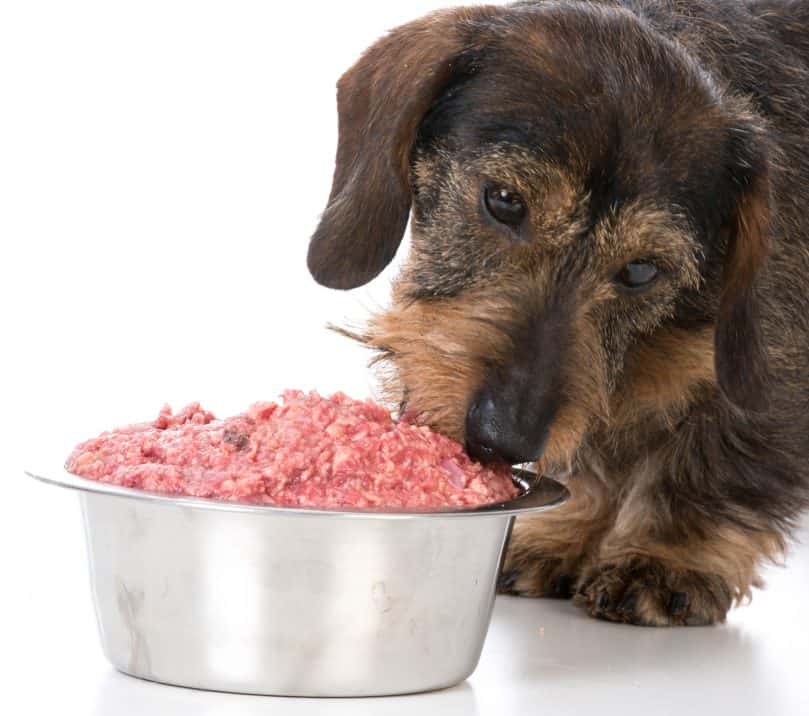
How often should you be feeding your dog with raw diet?
This is a different topic. It’s important that you know that the calculations you made to know how much raw dog food to give your pet is for the whole day.
It’s generally recommended for owner’s to split or divide their dog’s meals into smaller servings.
The ideal feeding is one in the morning and once at night. If you give your dog his daily meal in one serving, he or she may start feeling lethargic before dinnertime the following day.
Splitting meals throughout the day can also help avoid the chances of health issues such as bloating.
Recipes to try to start a raw dog food diet
Before trying out any recipes from a book or online, consult with your vet first as the required nutritional balance for dogs would vary based on their size and breed.
Ingredients:
- Ground beef (2 ½ lbs)
- Chicken livers (4 oz)
- 1 Carrot (chopped)
- 1 Small apple (cored)
- Baby spinach (½ c)
- 2 Eggs (whole, including shell)
- Plain yogurt (½ c)
- Flaxseed (1 tbsp, ground)
- Olive oil (1 tbsp)
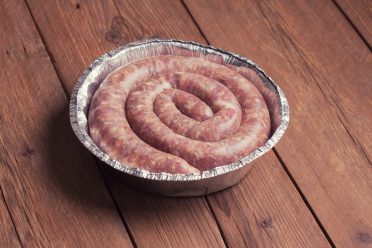
Directions:
- Place the apple, spinach, and carrot in a food processor and finely chop.
- Mix and process the other ingredients, except the beef.
- Place the processed mixture in a bowl, add the beef, and mix it well.
- Divide it into portions and make patties or sausages using your palm. Place it on a baking sheet lined with parchment (to avoid contact with other surfaces).
- Transfer to a storage container and keep it in the freezer.
- If you’re planning to feed it to your dog the next day, place the raw food into the fridge to thaw before going to bed.
If you want to create your own recipes, you should be aware that there are some foods or ingredients that you should never feed your dog.
Raw food diet meal plan
To get you started and give you an idea of what you can prepare for your dog, here’s a sample of a raw dog food daily menu that is planned out for the week.
| DAY | AM | PM |
| Monday | Big veal tails | |
| Tuesday | Beef (95% lean) mixed with 50% organ meats (liver, kidney, lung, and some green tripe) and a mixture of fruit and vegetables (5%) | Beef (95% lean) with organ meats (50%) |
| Wednesday | Lamb ribs | Beef (95% lean) with 50% organ meats, mixed with veggies and fruits (5%) |
| Thursday | Mackerel (whole) | Goat (ground meat) mixed with 40% organ meats, with fruits and vegetables (5%) |
| Friday | Rabbit (whole) | |
| Saturday | Lamb ribs | Ground goat mixed with organ meats (40%) and a mixture of fruits and vegetables (5%) |
| Sunday | Beef neck bone | Fruits and vegetables |
This is based on a daily raw dog food plan for a canine that’s been on this diet for quite some time. If you’re starting out, you can use poultry. But once you get used to raw feeding and you can afford it, it’s best to balance your pet’s meals with bone and meat.
Most owners feed their dogs with fish oil. But did you know that even the high-quality kind can quickly turn rancid and even cause inflammation? Besides, it’s not friendly for the environment and it’s also a heated, processed product. If you want fish to be included in your dog’s diet, then use fresh, whole fish.
Sardines, mackerel, herring, and smelts are great examples but do it only once or twice per week. Balance out the fats in his diet by sticking to 5% fish in your pet’s total diet.
You can also try other homemade recipes for dogs if you prefer cooked food instead of raw.
The verdict about raw food diet for dogs
Not one type of feeding works for all dogs, even those who have a good appetite.
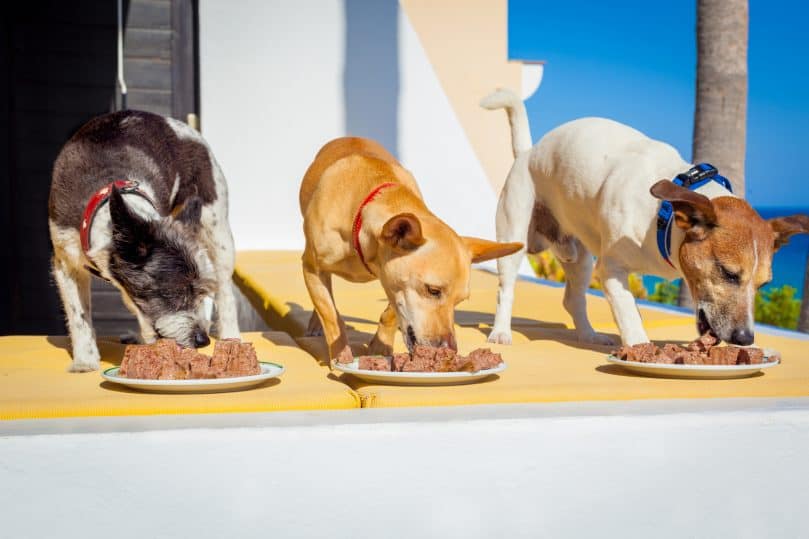
While the raw dog food diet is becoming popular, not everyone can switch their dog to it. It can be due to health issues or food sensitivities. But before doing any dietary change for your pet, talk about it with a trusted vet to know your dog’s specific needs.
And always observe how your dog reacts. If there’s any change with the way he acts, sleep, eat, or drink water. Shifting to a new kind of food can almost always cause stomach pain.
If your fur baby gets sick, take him to a veterinarian right away.
Remember, be patient all throughout the process. Eventually, you’ll be way more comfortable with the new diet for your pet. You’d also see an improvement in your dog if the type of feeding you’re giving him or her is the right one. You will notice less stinky breath, better and shinier coat, and even fewer health problems.
What are your opinions about the raw dog food diet? Do you have any ingredients or recipes to share? What type of feeding works for your pet? Share with us and the other readers all about it!

Leave a Reply